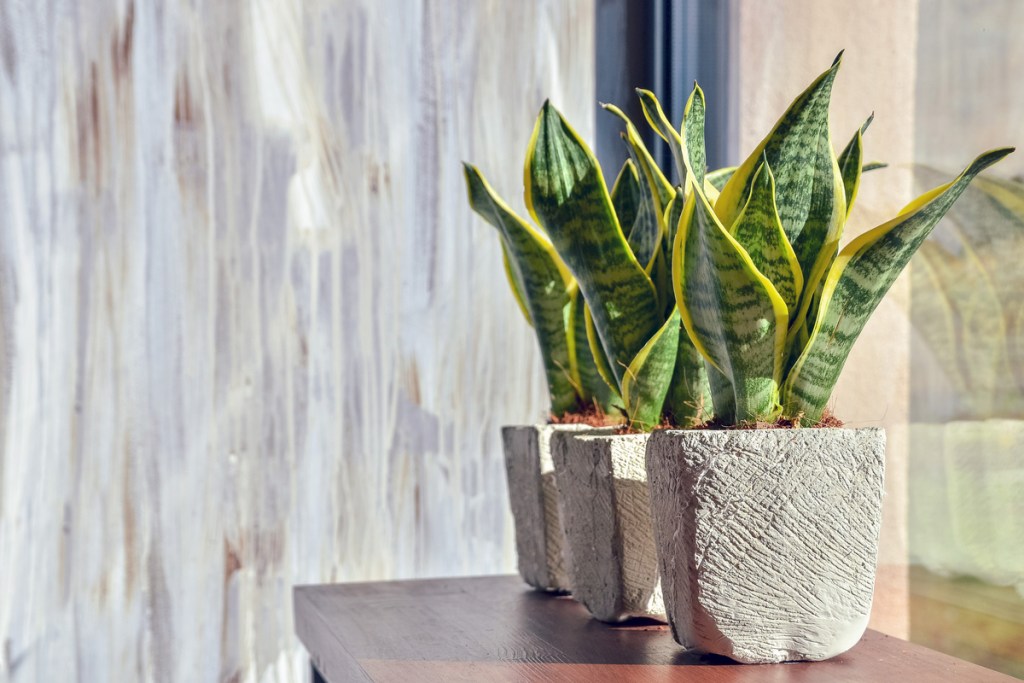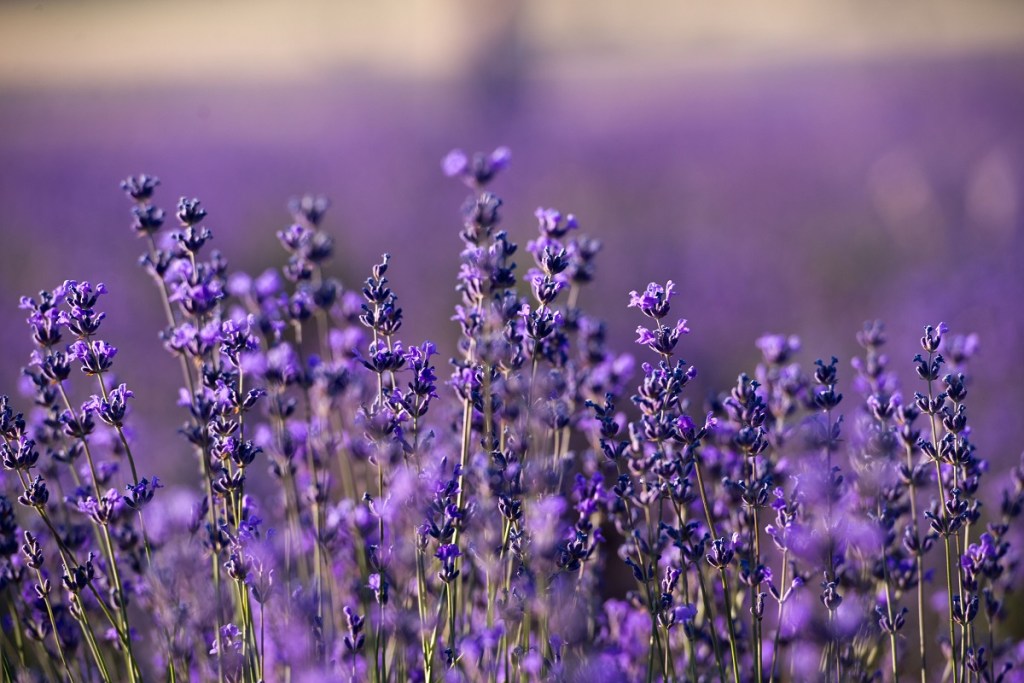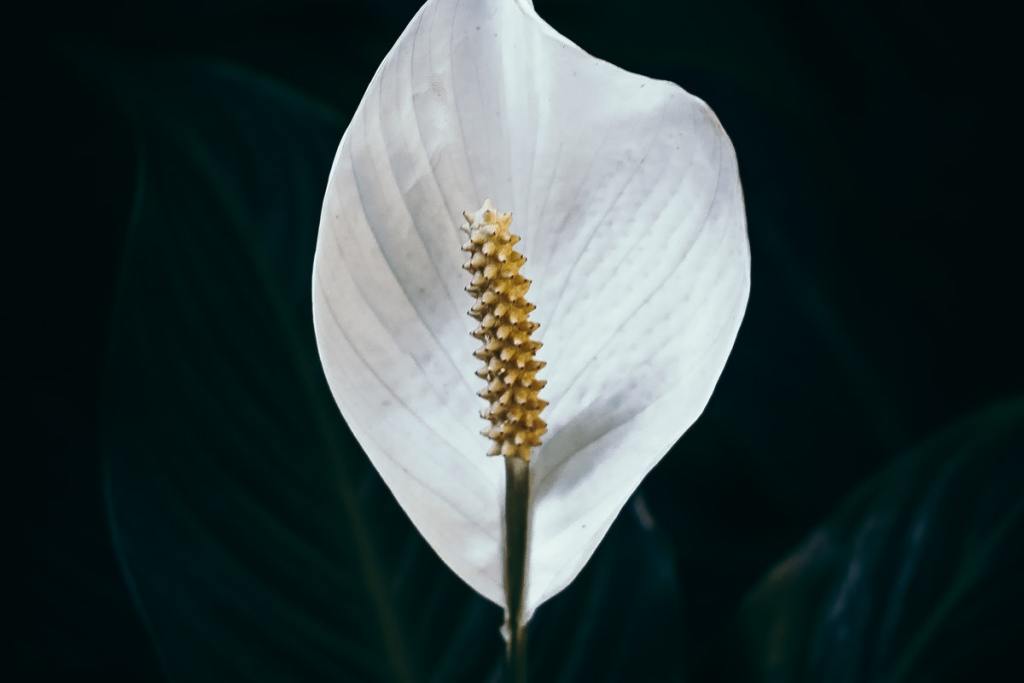Growing houseplants is one of the best hobbies for stress relief — simply watering and watching your plants grow can help you forget about your daily worries. Many plants actually help improve air quality by reducing toxins, which, in turn, can soothe anxiety. Some, such as lavender and peppermint, can also reduce stress by way of aromatherapy! If you’re looking to melt your stress and anxiety away, start your self-care journey by picking up a few of the following plants.

Snake plant
Breathe easy and keep headaches at bay with a snake plant! According to NASA’s clean air study, this plant can clear 107 toxins from the air, such as formaldehyde, benzene, xylene, toluene, and trichloroethylene. Besides keeping air fresh, the snake plant is also incredibly easy to maintain. Consisting of clusters of marbled “snakes,” it only needs to be watered when its soil dries out completely. It appreciates, but doesn’t necessarily always need, bright indirect light and liquid fertilizer.
Aloe vera
Prized for its anti-inflammatory properties, aloe vera is an incredibly versatile plant that can be used for everything from treating skin scrapes to cleaning toxins in the air. Keep it in the kitchen or bathroom, where most toxins are. This spiky succulent appreciates bright light and weekly waterings. When you take cuttings, remove one leaf at a time to keep your plant looking lush and healthy.
English ivy
While you certainly don’t want to consume it, English ivy has been shown to reduce levels of mold and fecal matter in addition to purifying the air — and clean air can help reduce anxiety! It’s a relatively easy plant to maintain, consisting of thick, lobed, glossy leaves that climb and trail for a gorgeous rustic look. Ivy thrives on bright light as well as slightly dry soil. As long as you have sufficient light, English ivy should be a prolific grower for you!

Lavender
Lavender is calming to look at and smell, so it’s no wonder it’s in so many stress relief products. It contains an alcohol called linalool, which gives it its anti-depressant, muscle relaxing, mood lifting, and antioxidant properties. This shrubby perennial is also easy to grow, whether you keep it in a container or incorporate it into your garden landscape. It tolerates drought well and will yield vibrant blooms when you regularly feed it.
Areca palm
In addition to its foliage giving any space a tropical vibe, the areca palm is a natural air purifier. Plus, if you have pets, the areca palm is completely non-toxic, so you won’t have to worry about your dog or cat nibbling on its leaves. As long as you give it bright indirect light and keep its soil moderately moist, the areca palm should continue to thrive under your care!
Peppermint
Peppermint is beloved for boosting calmness and alertness — studies have linked it to decreased anxiety and fatigue. It has a compound called menthol, which is often used for relaxing muscles in bath products. In addition to promoting relaxation, peppermint is also easy to grow in a kitchen garden — as long as you give it enough water, it should continue to spread out. If you grow it outside, make sure to protect it from the heat, which can easily scorch peppermint leaves.

Peace lily
Find peace with a gorgeous peace lily, which consists of dark green leaves with striking white spathes. This elegant plant is an excellent air purifier, removing acetone vapors and mold spores that can disrupt sleep. It’s relatively easy to maintain as well — all you need to do is keep its soil adequately moist (without overwatering) and give the foliage plenty of bright indirect light.
Pothos
The pothos plant can filter out benzene, formaldehyde, and xylene to help purify your air. This trailing plant is also one of the easiest houseplants to maintain — you’ll enjoy the benefits of gardening without stressing over care requirements! The pothos will thrive with bright indirect light and weekly feedings during the growing season, but it will still push out leaves in low-light conditions and without fertilizer. Just make sure to water it when its soil dries out completely.
Adding greenery to your home or office can help you manage the stresses and anxieties of everyday life. Many anti-stress houseplants are also actually quite easygoing in terms of maintenance, so you can reap their anti-anxiety benefits without stressing over care requirements! From snake plants to peppermint, you’ll find plenty of easy-care plants that help reduce stress.
Editors' Recommendations
- Stunning Monstera plants that you should add to your indoor plant collection
- Beyond basil and cilantro, add these unique plants to your indoor herb garden
- 5 easy-care spider plant varieties perfect for any home garden
- Easy hoya plants to add to your indoor plant collection
- Do ZZ plants cause cancer? Here’s the definitive answer




